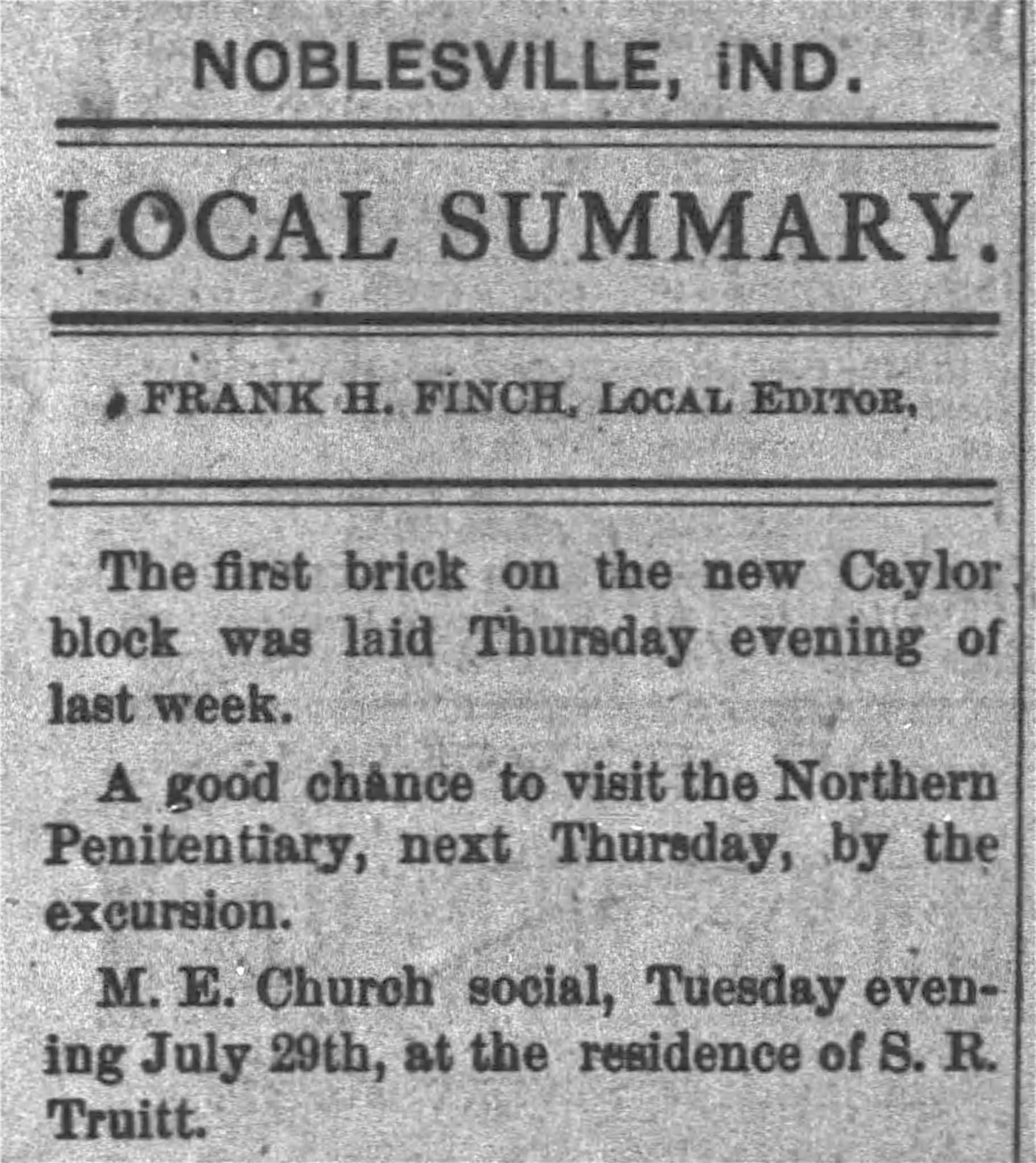 A Portrait as a Present: the Art of Francis H. Finch
A Portrait as a Present: the Art of Francis H. Finch
By: David Heighway, Hamilton County Historian
In a continuation of my last post on Frank H. Finch, crayon artist, I want to look at his decade-long career in Noblesville. I’m mentioning the subjects of his known portraits in the hope that one of these pictures may still exist.
After opening his business in 1877, Frank married Maggie Chambers (1859-?) in March of 1878. He showed his portraits at the Cicero Fair in September of that year and won awards for best picture and best collection. The best picture was an image of Dora Pursell, a man who was a Noblesville dry-goods merchant.
The year 1879 kept Frank quite busy. January saw him create a portrait of Dr. J. E. Renner. In April, he did portraits of Albert J. Ball, the deputy county treasurer, and William Bodenhamer, the editor of the Ledger (I’ve written about him before). Frank did a posthumous portrait of his father in June, which Ledger called “the highest order of art”. He entered the County Fair in September and won $2.00. He also did an exhibit in Indianapolis. He announced in October that, because of their continued support, he would charge local people only $15.00 for a portrait. Outsiders would be charged a more variable rate.
He worked out of his home and studio at 28 South Polk St., (now the site of the fire department engine house), and also took in boarders. In February of 1880, he created a posthumous portrait of John Patterson for a memorial event put on by Patterson’s widow in Westfield. Since Frank was also interested in the poultry business, he did a portrait of Dr. J. W. Cooper, a famous Pennsylvania chicken breeder. Frank created the pictures of presidential candidate James A. Garfield for political rallies that were held in September when Frederick Douglass spoke (I’ve talked about this before, here and here). Sadly, his one year old daughter Alice died in October.
 In May of 1881, he did a posthumous portrait of the mother of 14-year-old Hattie Bush, who had died when Hattie was an infant. His 3-foot-by-6-foot India ink drawing of the Old Corner Drug Store was displayed at the county fair in August of 1882, which was held at the site of present-day Riverveiw Health.
In May of 1881, he did a posthumous portrait of the mother of 14-year-old Hattie Bush, who had died when Hattie was an infant. His 3-foot-by-6-foot India ink drawing of the Old Corner Drug Store was displayed at the county fair in August of 1882, which was held at the site of present-day Riverveiw Health.
He was busy again in 1883. In June, he did a posthumous portrait of Frank Hall. His portrait of Gus Gumberts won $1.50 at the county fair in September. Also that month, he did a series of portraits of deceased members of the Hamilton County bar – Judge Earl S. Stone, Sol Maker, and Will Evans – that were to be for display in the courthouse. He did a portrait of Julius Joseph’s grandmother in Shelbyville in December.
He did posthumous portraits of two children of Joe Nicholson in February of 1884, but was starting to look at other employment. He became the local editor of the Ledger in April, which lasted until July. He had always been interested in breeding and raising chickens and began to focus more attention on it. Still, he entered art in the county fair in September and got a First Place. Another daughter was born in October and his mother died in January of the next year.
Information about his life becomes more fragmented after this. In 1886, he displayed his art at the county fair. In September of 1887, he became the hotel desk clerk at the Wainwright Hotel (I’ve talked about that place before). In 1888, he left Indiana and moved to Georgia where his wife joined him in August. In 1889, he was living in Texas and, curiously, disappears from the public record after that. He may have moved south because of his chronically poor health.
Although we don’t know the final outcome of his life, it’s obvious that he made an impact while he was here. It would be nice if some of his portraits still existed to show the quality of his work.
